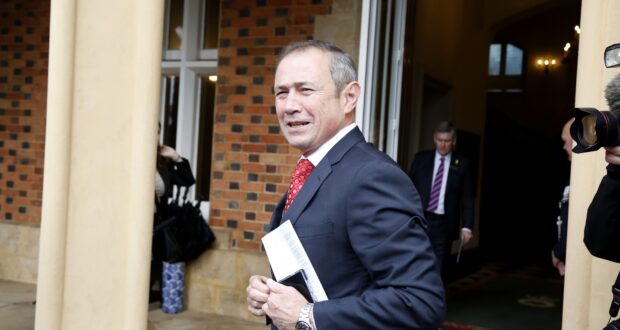The federal government committed to increasing its share of public school funding from 20 per cent to 22.5 per cent on Tuesday – a $3bn per year investment and the biggest funding shakeup in more than a decade.
To receive the funding, each state government will need to guarantee they will fund each school to 100 per cent of its Gonski-based Schooling Resource Standard (SRS).
Western Australia will be the first state to deliver 100 per cent of its SRS by 2026 after the federal government agreed on Tuesday to give the state an extra $777.4m between 2025 and 2029.
Federal Education Minister Jason Clare and WA Premier Roger Cook signed a 'statement of intent' after the agreement, signalling their commitment to the funding increases.
The Cook government will need to match the $777.4m federal investment number to meet the SRS target, bringing the total funding for WA schools to $1.6bn.
Federal government funding will rise to 21.25 per cent in 2025 and to 22.5 per cent in 2026.
The extra money will be spent on catch-up tutoring and student wellbeing services, implementing evidence-based teaching methods and providing greater professional development and support for classroom teachers.
Disadvantaged schools with high student numbers of Indigenous, migrant, disabled and low socioeconomic students will start receiving extra funding next year, followed by other schools in 2026.
The increased funding will be offered to all states and territories, who must use it to achieve recommendations made by education experts on the National School Reform Agreement panel in December.
The recommendations look to improve student learning and quality of teaching, reduce disruptive classroom behaviour, attract and retain teachers and increase funding transparency.
However, the panel was adamant that no education reform can be achieved before funding shortfalls are overcome.
The Australian Education Union (AEU) has been advocating for every school to be 100 per cent SRS funded by 2028, asking the federal government to raise its contributions to 25 per cent, a $6bn cost.
The Northern Territory, where student disadvantage is the worst in the country, will need a 40 per cent contribution from the federal government to catch up.
"As the panel found, funding gaps are fuelling unacceptable achievement gaps between students from different backgrounds and locations," AEU president Correna Haythorpe said.
"We don’t have a level playing field in education that ensures every child gets every opportunity to
succeed. Fixing that starts with funding."
The union said Catholic schools were overfunded by $800m last year, 80 per cent SRS funded by the federal government, while public schools were left needing an extra $4.5bn.
Ms Haythorpe also said Tuesday's agreement would only see WA public schools funded to 96 per cent SRS funded.
"WA’s SRS funding share is artificially inflated by four per cent through the inclusion of costs not directly related to the education of students in schools, such as capital depreciation, transport and regulatory costs," she explained.
"That four per cent of the SRS was worth $230m for WA in 2023 and that money still needs to be delivered to WA public schools before schools are truly funded at 100 per cent of the SRS.
"This has to be the first step rather than the final agreement."
Queensland, Victoria, Tasmania and South Australia have all retain the position that the Commonwealth should close funding gaps, not state and territory governments.
The only state or territory with schools fully funded to the SRS is the ACT.
NSW Education Minister Prue Car said state governments are continually dealing with pressures to provide "world class services" to a growing population.
"Our government has committed to reach 75 per cent of the Schooling Resource Standard by 2025 - that’s two years earlier than the previous government’s target."
Do you have an idea for a story?Email [email protected]
 Education Review The latest in education news
Education Review The latest in education news
